Plenty of Details: Air Canada Launches A New Loyalty Program With A Familiar Name

Allow me to nerd out for just a minute. I’ve been a hardcore points and miles nerd for over 20 years. Rarely in that time have we seen a completely new loyalty program emerge. Even more rare is to see a new loyalty program from a large, established airline. Southwest Airlines’ Rapid Rewards program is the one that immediately comes to mind when I think of big airlines with new programs. Fast forward to today, and we have the reimagined Aeroplan program. Many moons ago, Air Canada spun off Aeroplan. It was an odd sort of relationship, but those days are now over.
Air Canada spent some time with travel bloggers last week to go into detail about the new program, and there is a lot to digest. Side note: if you’d like to hear directly from the top loyalty executives at Air Canada, stay tuned for my upcoming Miles to Go podcast interview on Wednesday. Subscribe to the podcast in iTunes and the episode will get dropped right on your phone when it’s live. And, Air Canada has a microsite dedicated to explaining all the new details.
There’s a lot to digest, and I doubt I’ll do it justice all in one sitting. Suffice it to say that I think the changes are good for families who like to travel using their points. Hang out for a bit and you’ll know what I know.
No Surcharges
One of the existing pain points of the Aeroplan program is the requirement to pay cash surcharges along with your points to redeem for popular awards. That goes away in the new program, with one small exception. You’ll pay a $39 CAD fee per ticket when one of your flights is on a partner airline, such as United or Lufthansa. This is a really positive change for families who book multiple tickets (and thus pay multiple carrier surcharges. Air Canada has also said that you’ll be able to pay that $39 CAD fee using points if you want a zero dollar out-of-pocket cost, though I’m guessing that won’t be a screaming good value.
“Family” Pooling
Up until the past few years, there really weren’t any major programs that allowed customers to “pool” their miles or points. The inability to do so frequently leaves small amounts of miles or points sitting in the accounts of children and the occasional traveler, usually to expire without getting used. More recently, some airlines have come up with unique ways to allow customers to combine their miles and points into one account. Air Canada appears to have put quite a bit of thought into their new plan for family pooling, including how to deal with issues of people trying to break the rules. I think they arrived at a really fair solution that doesn’t restrict everyone to protect against a few bad apples. Here are the details we know so far:
- An individual can start a “family” account for themselves and up to 7 other individuals. Air Canada is giving customers the flexibility to define your family as something other than everyone who lives at a physical address. So, that cousin you have in Colorado? Yeah, they can be included.
- If you’re the person who starts the family plan, you are designated the “Family Lead”. You have the ability to grant permission for people in the group to redeem points on their own.
- Members who join a family pool must stay for a minimum of 3 months.
- If you decide to leave a family sharing group, you’ll need to wait 6 months before joining another one.
- Once a member joins a family plan, all their current points get added to the family pool.
- Probably the best part of the family pools, if any member of the family pool has elite status or holds an Aeroplan credit card, the reduced pricing on awards is available to everyone in the group.
There are some other bits and pieces about how points are deducted from accounts, but this is the meat of the family sharing plan. This new benefit strikes me as very good for families, however you choose to define yours.
Award Charts
But, Ed, how many points will it cost me to redeem for an award? Good question, one that has lots of answers. The basic answer is that the program becomes more distance-based, though there are some “zones” that determine the range of points required to redeem for certain awards. There are a lot of charts, so let’s start with the zones first.
The travel zones are pretty straightforward and shouldn’t lead to much confusion. Once you figure out which zone you’re traveling in, or if you’re crossing zones, then you can start to figure out how much an award will cost. Let’s look at North America.
Aeroplan North America Award Chart
There are plenty of comparisons you could make across the various charts. In North America, I’m going to look at it first and foremost from a US perspective. Would I want to fly Air Canada from my home airport of Washington-Dulles to Toronto? How about Vancouver?
Toronto is located pretty close to to DC. About 350 miles, that flight would fall into the first band, or 6,000-10,000 points for a one-way flight on Air Canada, or 6,000 points for a flight on United. Those both strike me as solid deals, considering that United rarely has saver inventory available on a route like that. If they did, it would normally cost at least 12,500 United miles to book that one-way flight. We’ll chalk this one up as a clear win for Air Canada.
How about that flight from DC to Vancouver? That flight is about 2,350 miles. According to the new chart, Air Canada would charge me between 12,500 and 17,500 miles to fly one-way to Vancouver on their planes, or 12,500 to do it on United. United is going to charge me anywhere from 12,500 to 20,000 miles one-way on their planes. In this case, Air Canada could be cheaper to fly on United than on their own planes. I think I’d call this one a push when it comes to which airline is a better deal for travelers flying long distance in North America. How about flying to Europe?
Aeroplan Chart For Travel Between North America and Europe or Africa
Interestingly, Aeroplan puts all of Africa in the same region with Europe. They manage the pricing of the actual awards using the distance bands. Let’s take a look:
The bands here are a bit more problematic. I live fairly close to the Atlantic Ocean, but it’s still pushing 4,000 miles for me to fly to London. I can get as far as Paris in that first 4,000 mile band, but not Rome. And, if I live in Chicago, I can just barely get to London. Realistically, many flights to Europe from the US and Canada will fall into at least that second band from 4,001 to 6,000 miles. At the bottom of this range, Air Canada is still competitive at 40,000 points. However, if the price floats up to the top at 70,000 one-way, that’s enough points in some cases to get a business class seat on United using the same amount of United miles.
There’s a lack of international flights right now to get reasonable comparisons, but I’ve generally seen business class availability from Dulles to major destinations in Europe for 70,000 miles one-way on a variety of Star Alliance carriers. American Airlines will sometimes have saver business class to Europe on British Airways for around the same 65,000-75,000 miles one-way, but you’ll usually be backtracking to Chicago. The nonstop flights British Airways operates to Dulles are usually priced higher.
Air Canada is offering one-way partner flights to Europe for 70,000 points, which is about par. On their own planes, we’ll have to see how many flights price out at 70,000 points in that 4,001-6,000 mile tier versus the 180,000 points advertised as the top end of that range.
Thankfully, flights from places like San Francisco and Los Angeles to London still sneak in a few hundred miles short of 6,000. However, if you want to go much deeper into Europe, you’re going to kick up into that 6,001-8,000 mile tier. Folks, it ain’t pretty.
These are just a few examples from the new charts. I plan to dig in deeper both here on the blog and with some in-depth analysis on a future podcast episode.
There are over a dozen award charts. I’ve pasted all of them at the bottom of this article so you can nerd out over each of them.
Stopovers Made Easy
I’m always looking for ways to maximize miles on flights. Stopovers and open jaws are a great way to do that. It’s how our family turns one “round-trip” award flight to Europe into stops in Sicily, Salzburg and Vienna. Aeroplan makes this super easy and affordable with the new program. For 5,000 points you can add a stopover to your one-way flight (outside of North America).
Think of it like this. Let’s say you book a flight from Toronto to Frankfurt on Air Canada. You can stop over in Frankfurt and then head to Brussels, Copenhagen or Vienna. You can do the same on your one-way flight back. Maybe you take off from Copenhagen and go hang in Munich for a few days before you head home. It’s pockets of value like this that take an ordinary trip to an extraordinary one for just a few more points.
Earning Points In The New Aeroplan Program
Starting in 2021, Aeroplan will simplify how points are earned on flights. Whether you’re a winner or not on this front largely depends on what type of tickets you buy. You’ll earn 2 points per dollar on all Basic Fares and 3 per dollar on all others (Standard, Flex/Comfort, Latitude, Premium Economy, Business). Elite members can increase their earning multiplier as one of the benefits they can choose each year, based on status level as follows:
- 25K/35K: 4X total (on all but Basic fares)
- 50K: 5X total (on all but Basic fares)
- 75K: 6X total (on all but Basic fares)
- SE 100K: 7X total (on all but Basic fares)
The structure is definitely simpler, though it doesn’t have bonuses for people that buy pricier Premium Economy and Business Class fares.
Aeroplan Credit Cards Are The Key
Good news for many folks is that the new Aeroplan credit cards are going to unlock a lot of very key benefits for folks. The less good news is that US-based members will need to wait just a bit to get in on that action. There are 3 cards that I’ll highlight briefly:
- The entry level credit card comes with a free checked bag on every flight for you and up to 8 companions. You can earn elite status to the tune of 1,000 status miles and 1 segment for every $10,000 spent on the card. And, you get reduced redemption rates on award flights.
- The small business credit card also gets a free checked bag. It has a faster path to elite status with 1,000 status miles + 1 segment for every $5K spent. And, you can earn a free Air Canada lounge pass for every $10,000 spent on the card.
- The premium card is really interesting to me, and I hope they debut a US version. The card comes with the same elite status earning as the small business card. It also comes with Air Canada and Priority Pass lounge access as well as the ability to earn a $99 companion fare when you spend $25,000 in a calendar year. Holding this card in your wallet also means you’ll have a leg up on other elite members of the same status level who don’t hold the card. But, the most intriguing benefit to me is the ability to “Rollover” Elite Miles and eUpgrades from year-to-year. With the ups and downs of business travel, I love that road warriors can get credit for all of their travel, not just the spending that helped them achieve status.
Aeroplan has noted more goodies are coming with the rollout of these new cards. What I see here is a concerted effort to tie benefits to holding an Aeroplan credit card. That’s no surprise, it’s a model many airlines have utilized. But, Aeroplan takes it much further than a free checked bag and priority boarding with things like Rollover Elite Miles. Love the innovation here!
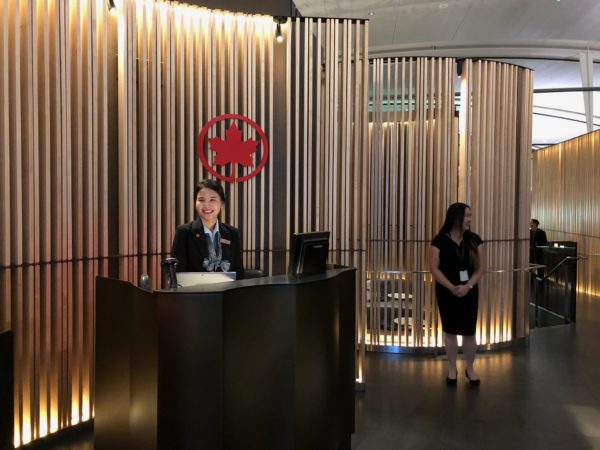
So Much More To Discuss
There’s plenty more in the new Aeroplan program, though the details above are my favorite. Some of the other thing in store from the folks at Air Canada and Aeroplan:
- The ability to combine points and cash for flights.
- The ability to combine a great paid fare and a great award flight.
- Earn elite status through every day spending. Good for folks who don’t travel for business.
- Share your elite status with friends and family, even when they’re not traveling with you.
As with any program, the devil will ultimately be in the details. If you’re flying Air Canada to Europe, will you pay 35,000 points one-way or 60,000? The jury is still out on that, though I’d be surprised if they were at the upper end of those ranges. It would make them really uncompetitive.
It’s early days for the new Aeroplan. At first blush, this program looks really good for every day folks, especially those with families. I’m looking forward to the roll-out of the program. And, that US-based credit card.
And, just in case you guys think I forgot all those other award charts……
Did you enjoy this post? Please share it! There’s plenty of ways to do that below.
You can also follow me on Twitter, Facebook and Instagram.
And, I hope you’ll check out my podcast, Miles To Go. We cover the latest travel news, tips and tricks every week so you can save money while you travel better. From Disney to Dubai, San Francisco to Sydney, American Airlines to WestJet, we’ve got you covered!
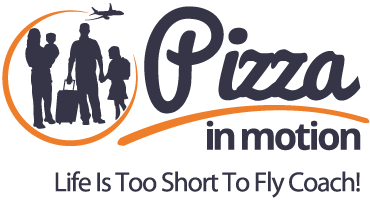


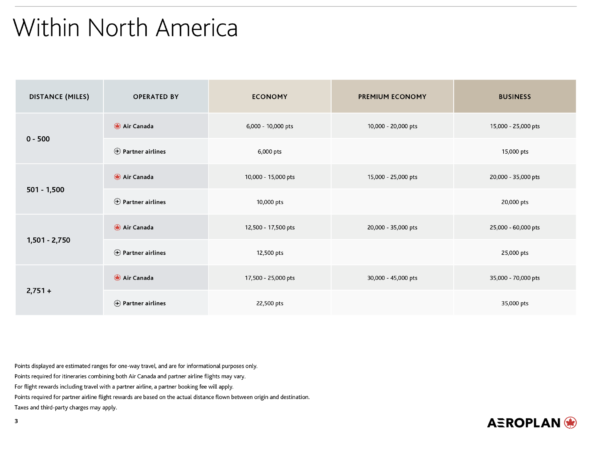
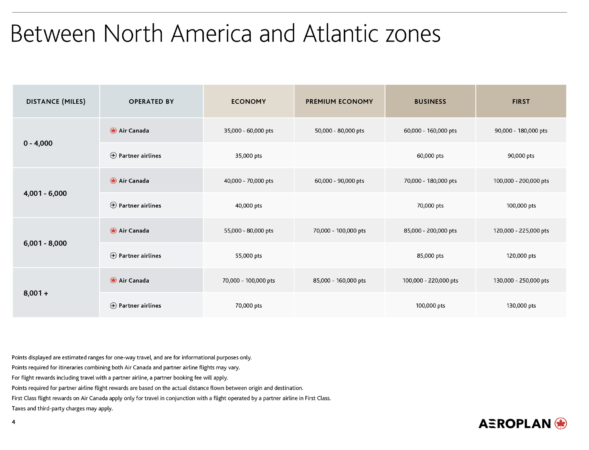
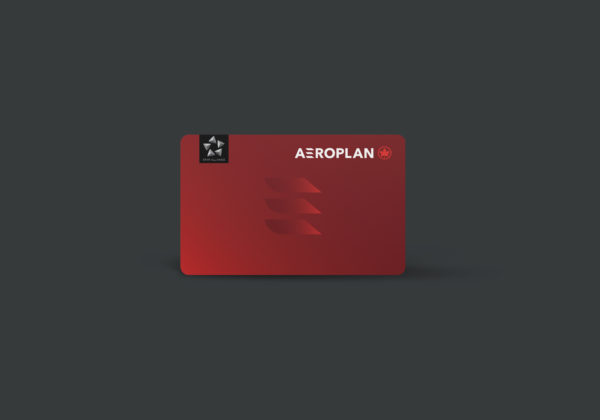
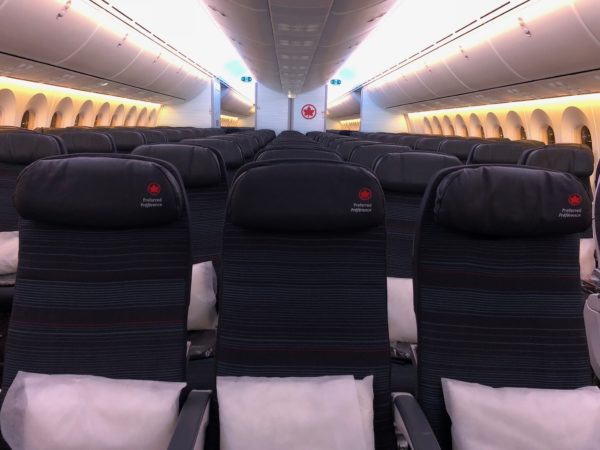
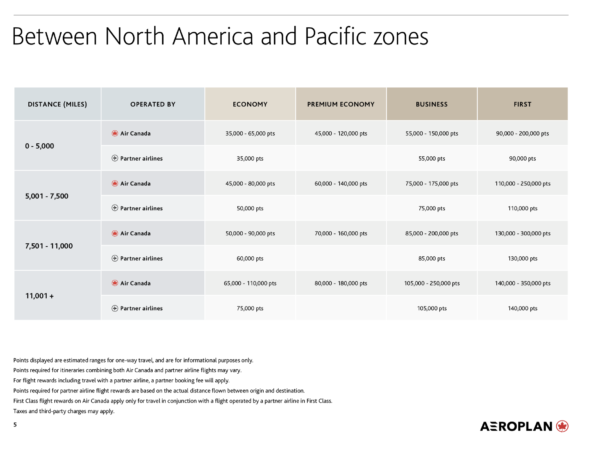
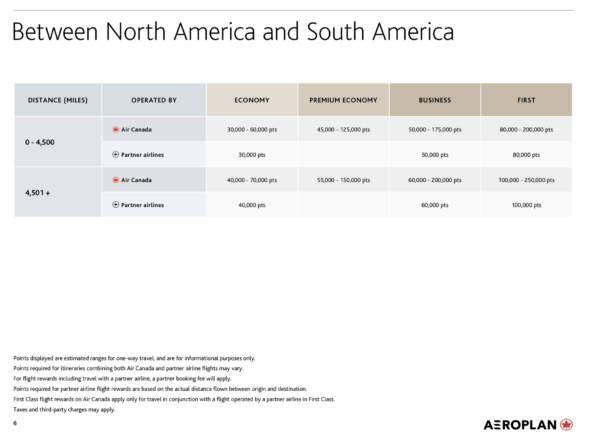
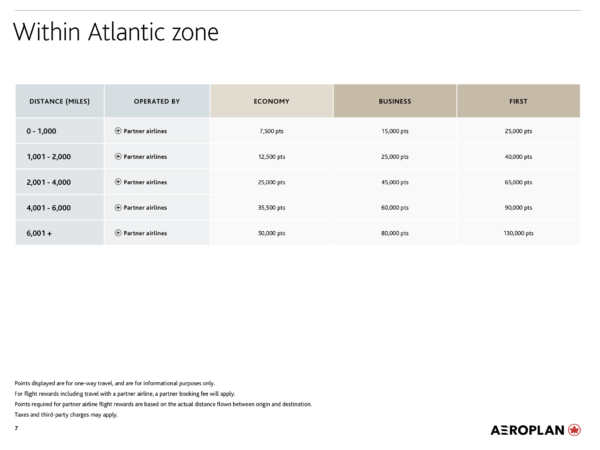
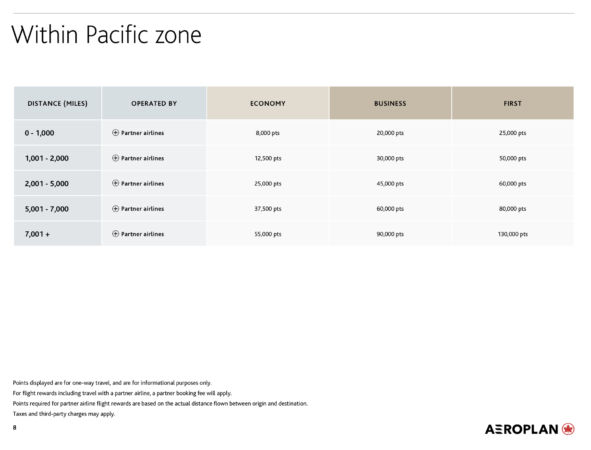
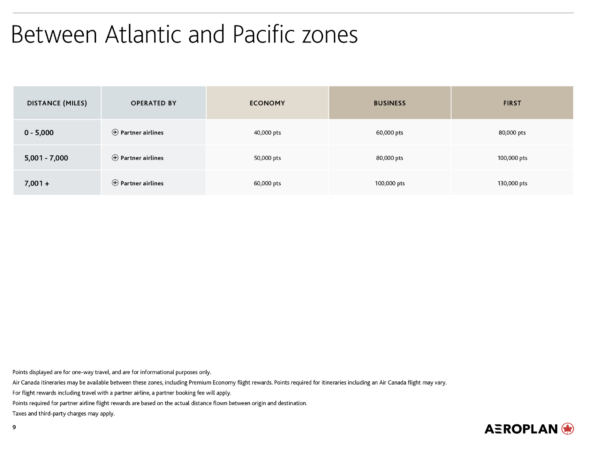
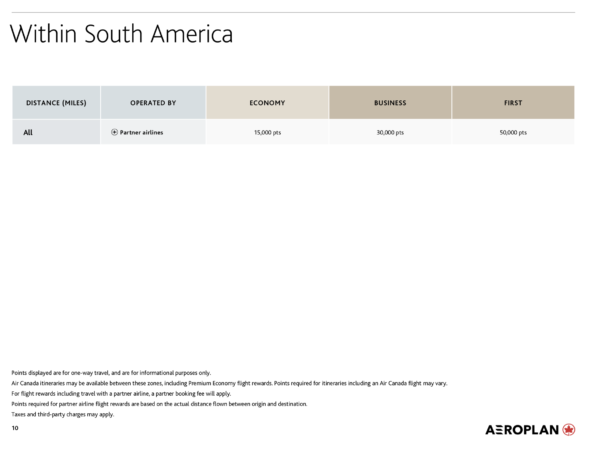
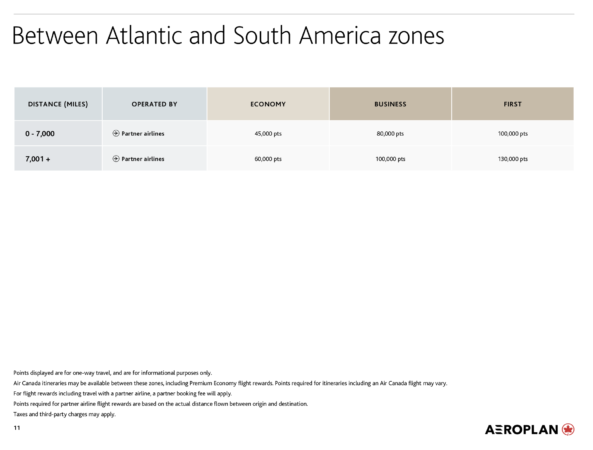
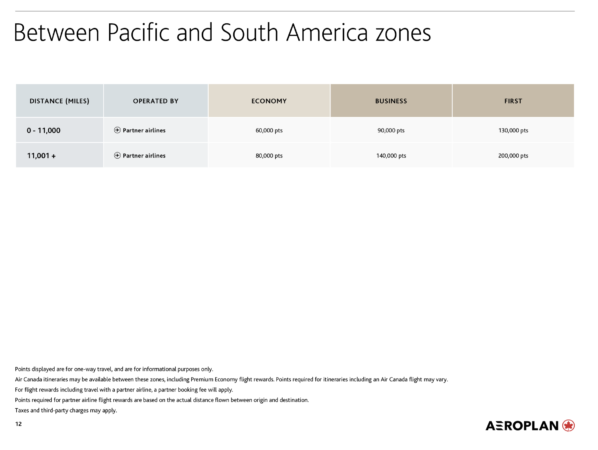
So with the Aeroplan new chart, I could fly to Maine for as little as 6,000 points for a short hop, and 22,500 points from as far away as Hawaii? Pretty awesome. And I hear Maine is beautiful!
Thanks for the interesting read. Recently, with no flying, I’ve been reading less about the airline and hotel programs. I’m glad that I read this review, and will file it away for future re-reading when things get back to normal.
Thanks Ed.
When is the new plan effective? TodY or a future date?
I see the new program will be effective November 8, 2020, so I found the answer to my question. My next question is how older tickets will work as far as changes. If I book 2 tickets to Europe for next year at 55k each will I be able to change under the then old rules (say to Lufthansa First for 70k – 15k more or will that option be dead on older tickets after November 8, 2020
Marty, let me see if I can get an answer for you.